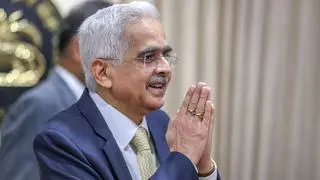The Reserve Bank of India on Monday said that economic growth, while showing signs of picking up, is still below levels that the country is capable of achieving.
However, India’s growth prospects in financial year 2016-17 are brighter than in 2015-16 due to better monsoon coupled with more money in the hands of government employees following implementation of the Seventh Pay Commission report, the central bank said in its annual report.
“The key weakness is in investment, with private corporate investment subdued because of low capacity utilisation, and public investment slow in rolling out in some sectors. Second, inflation projections are still at the upper limits of RBI’s inflation objective,” Raghuram Rajan, Governor, RBI, said in the foreword to the report.
“A virtuous cycle of growth is possible, reinforced by anticipation of the coming benefits from reforms like the recently passed Goods and Services Tax legislation in Parliament,” he added.
Rate cutThe report indicated that the RBI may keep interest rates on a tight leash, at least for a couple of months more with Rajan underscoring that the room to cut policy rates can emerge only if inflation is projected to fall further.
As per the report, headline inflation (total inflation, including food and fuel) is expected to trend towards the target of 5 per cent by the last quarter of the year, although at the current juncture, upside risks are prominent. The RBI has assessed that in aggregate, the impact of the Pay Commission is expected to peak by September 2017.
LendingThe RBI Governor highlighted that willingness of banks to cut lending rates is muted; not only does weak corporate investment reduce the volume of new profitable loans, but also their stressed assets have tightened capital positions, which may prevent them from lending freely.
“Certainly, the reluctance to lend to industry and small businesses is more visible among the more stressed public sector banks compared to the private sector banks,” he said.
The RBI said that the Asset Quality Review initiated in early 2015-16 has improved recognition of NPAs and provisioning in banks enormously.
“Now more focus should move to improving the operational efficiency of stressed assets, and creating the right capital structure so that all stakeholders can benefit,” Rajan said.
“Some of the current difficulties comes from an unrealistic application by banks of a scheme so as to postpone recognition of a loan turning NPA rather than because of a carefully analysed move to effect management or capital structure change,” the central bank chief added.
RBI has projected the Overall Gross Value Added growth at 7.6 per cent in 2016-17, which is 0.4 per cent more than last year.






Comments
Comments have to be in English, and in full sentences. They cannot be abusive or personal. Please abide by our community guidelines for posting your comments.
We have migrated to a new commenting platform. If you are already a registered user of TheHindu Businessline and logged in, you may continue to engage with our articles. If you do not have an account please register and login to post comments. Users can access their older comments by logging into their accounts on Vuukle.